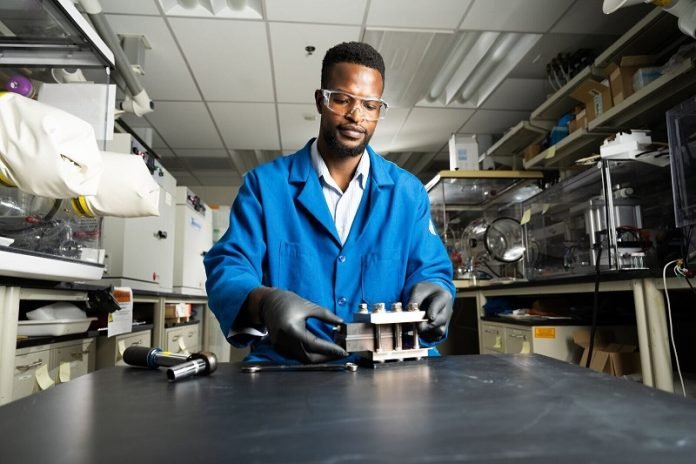
Researchers at the Pacific Northwest National Laboratory have made a breakthrough in energy storage technology with the development of a new type of battery called the liquid iron flow battery.
This innovative battery design offers a safe, cost-effective, and environmentally friendly solution for storing energy on a large scale, contributing to the integration of renewable energy sources like wind and solar power into the electric grid.
Unlike traditional batteries, the liquid iron flow battery utilizes two chambers filled with different liquid chemicals.
These chemicals undergo electrochemical reactions to store and release energy, functioning like the “blood supply” of the battery system.
What sets this battery apart is its use of a unique liquid chemical formula that combines charged iron with a neutral-pH phosphate-based electrolyte called NTMPA, commonly used in water treatment facilities.
The key advantage of this battery lies in its remarkable stability and longevity.
In lab tests, it maintained 98.7% of its maximum capacity over one thousand consecutive charging cycles, far surpassing previous studies on similar iron-based batteries.
Additionally, the use of NTMPA, an Earth-abundant and commercially available chemical, ensures scalability and accessibility for large-scale energy storage applications.
Flow batteries, like the liquid iron flow battery, play a crucial role in modernizing the electric grid and facilitating the transition to renewable energy sources.
They can serve as backup generators and help store excess energy generated from renewables for later use.
Moreover, these batteries offer flexibility in terms of scalability, making them suitable for various settings from small-scale applications to city-wide energy storage facilities.
One of the significant advantages of this battery is its safety and environmental friendliness.
Operating at neutral pH and utilizing commercially available reagents, it addresses concerns about consumer safety and environmental impact, particularly in urban and suburban areas.
While the energy density of the liquid iron flow battery is currently lower than some commercial alternatives, ongoing research aims to enhance performance and increase energy density.
Future developments may include improving voltage output and electrolyte concentration to make the battery more competitive with existing technologies.
Excitingly, the research team plans to scale up the production of this and other innovative battery technologies at the Grid Storage Launchpad (GSL), a new facility set to open at the Pacific Northwest National Laboratory in 2024.
The GSL will accelerate the development and deployment of flow battery technology, paving the way for a more sustainable and resilient energy future.
In summary, the liquid iron flow battery represents a significant advancement in energy storage technology, offering a promising solution for grid-scale energy storage and the integration of renewable energy sources into our power systems.
With ongoing research and development, these batteries could play a vital role in shaping a cleaner, more efficient energy landscape for generations to come.



